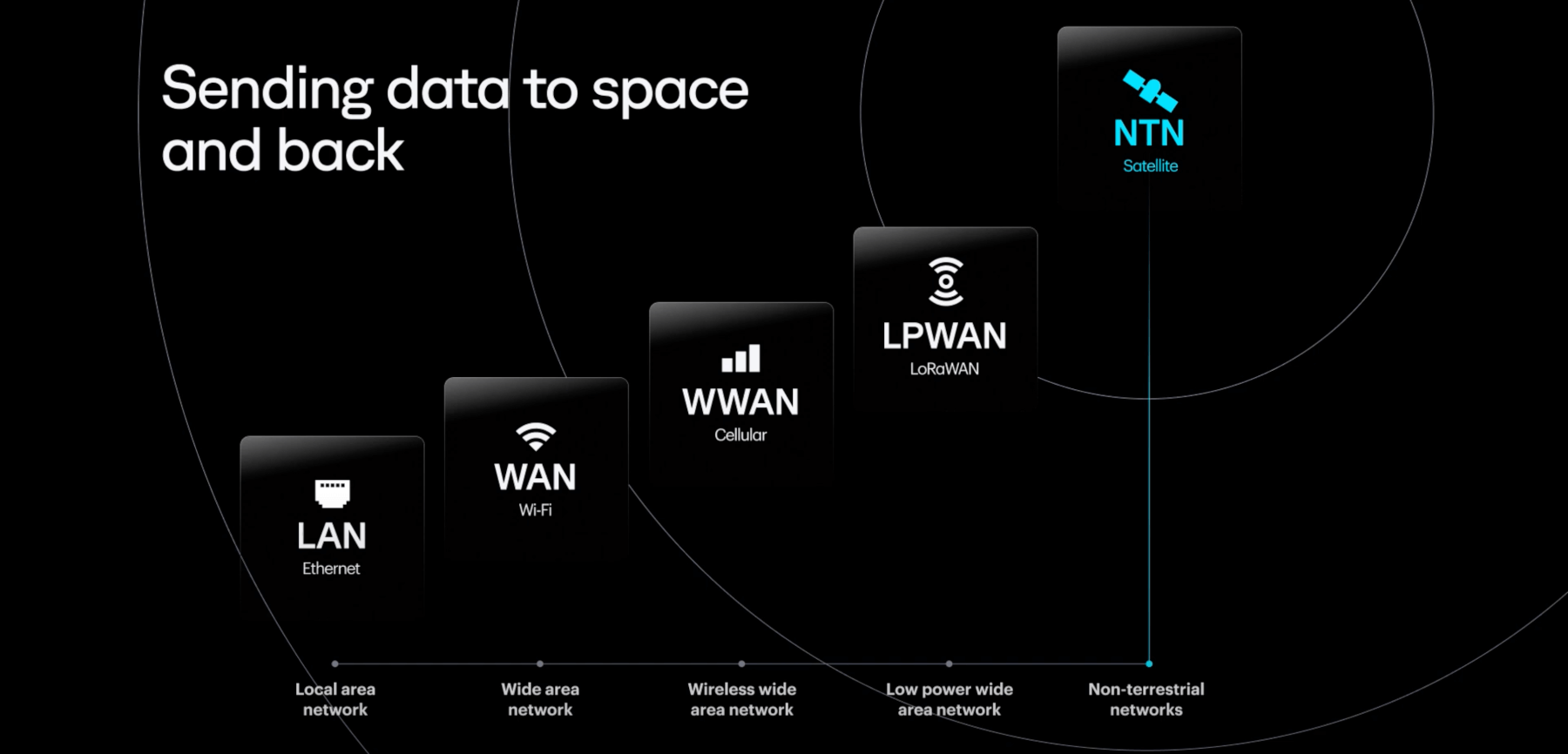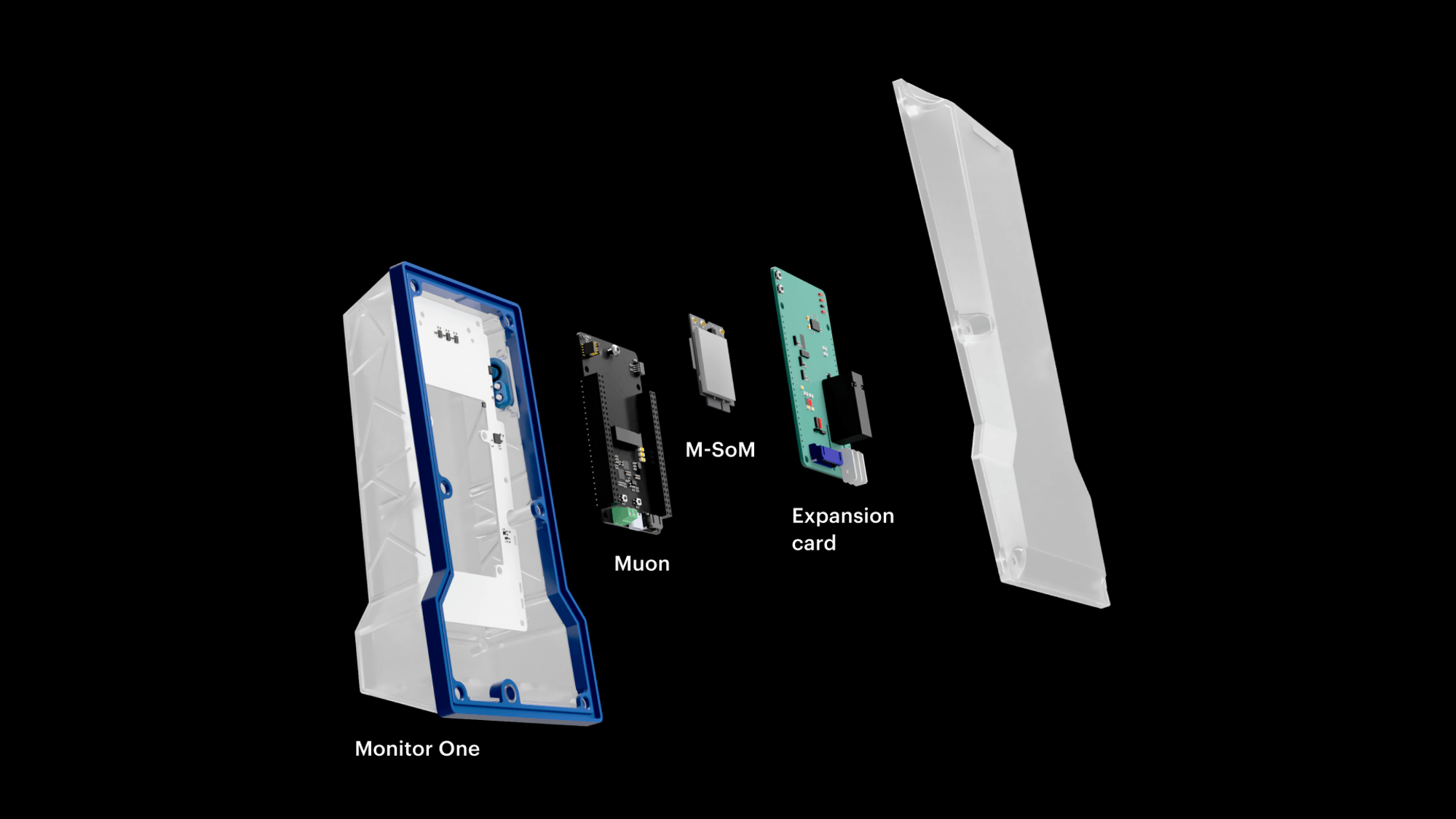Expanding connectivity with NTN communications and satellite IoT
Explore how NTN communications are revolutionizing IoT by extending connectivity to remote areas for innovative global service enhancement.
Ready to build your IoT product?
Create your Particle account and get access to:
- Discounted IoT devices
- Device management console
- Developer guides and resources
Non-terrestrial networks (NTN) are revolutionizing global connectivity by extending the reach of the Internet of Things (IoT) beyond the limitations of traditional terrestrial networks. By leveraging satellites and aerial platforms, NTN complements existing networks, enabling seamless IoT connectivity in remote and challenging environments. This article explores the transformative potential of NTN, the advancements driving its adoption, and challenges that remain as the boundaries of digital communication are continually expanded.
Understanding non-terrestrial networks (NTN)
Terrestrial networks include cellular networks (2G, 3G, 4G, and 5G), Wi-Fi, and low-power wide-area networks (LPWAN) like LoRaWAN and Sigfox. These networks have limited IoT's reach, often struggling to provide reliable coverage in rural regions, offshore locations, or areas with challenging terrain.
Non-terrestrial networks complement traditional terrestrial networks by providing wireless connectivity from airborne or spaceborne platforms, providing the missing link between terrestrial networks.

NTN encompasses two main categories: NTN-IoT and nr NTN.
NTN-IoT focuses on integrating IoT devices and applications with NTN, enhancing IoT coverage and reliability, especially in remote areas. By leveraging NTN satellite and aerial platforms, NTN-IoT enables IoT connectivity in regions where terrestrial networks are limited or unavailable.
nr NTN is designed to extend 5G NTN, improving bandwidth and latency for broader connectivity solutions. Nr NTN aims to seamlessly integrate satellite and aerial networks with terrestrial 5G infrastructure, enabling ubiquitous connectivity.
To illustrate the potential of NTN, consider a remote agricultural area where real-time data collection and monitoring are crucial for precision farming. Traditional terrestrial networks may struggle to provide reliable connectivity in such locations. However, with NTN networks, farmers can deploy IoT sensors and devices that transmit data via satellite or aerial platforms, enabling real-time monitoring and decision-making, regardless of the location's remoteness.
The role of NTN in IoT expansion
NTN technologies, such as satellite IoT and high-altitude platform stations (HAPS), can be integrated with 5G networks to create a comprehensive connectivity solution. This integration allows IoT devices to switch seamlessly between terrestrial and non-terrestrial networks, ensuring uninterrupted connectivity.
The integration of NTN with 5G enables advanced IoT applications requiring real-time data processing and low latency. By leveraging 5G's edge computing capabilities and NTN's wide-area coverage, IoT devices can efficiently collect, process, and transmit data, offering faster decision-making and improved operational efficiency.
NTN and satellite IoT have numerous applications across sectors:
Asset tracking and management: Companies can monitor goods and vehicles across global shipping routes, optimizing logistics and supply chain efficiency.
Agriculture: Precision farming techniques can be applied to monitor crop health, manage irrigation systems, and track livestock, enhancing productivity and sustainability.
Industrial monitoring: Energy companies can take advantage of satellite connectivity to oversee offshore oil rigs, ensuring safe and efficient operations through real-time data on equipment status and environmental conditions.
Advancements and innovations in NTN
Non-terrestrial networks are undergoing rapid advancements and innovations, enhancing global coverage and introducing new capabilities for IoT applications. Key developments include:
- Artificial intelligence (AI) and machine learning (ML) for optimizing network performance.
- Advanced beamforming and multiple access schemes for reliable connectivity and energy efficiency.
- Backscatter communications and energy harvesting technologies for sustainable IoT connectivity in remote areas.
- Integration of low Earth orbit (LEO) satellites, unmanned aerial vehicles (UAVs), and high-altitude platforms (HAPs) for expanded IoT connectivity reach.
- Innovations in encryption, secure protocols, and network architecture for data security and privacy.
These advancements are driving sustainability, efficiency, and security in the IoT ecosystem, enabling new possibilities for IoT applications worldwide.
Challenges and potential solutions in implementing NTN and satellite IoT
Implementing NTN and satellite IoT comes with several challenges that have historically slowed widespread adoption:
- Cost: Deploying and maintaining NTN infrastructure can be expensive, but advancements in technology and cost-effective solutions like small satellites and high-altitude platform stations (HAPS) are helping mitigate this challenge.
- Regulatory barriers: The use of satellite and aerial platforms for IoT connectivity is subject to regulations and licensing requirements. Collaboration between industry stakeholders and regulatory bodies is crucial in streamlining these processes.
- Technical limitations: NTN and satellite IoT systems face challenges related to latency, bandwidth, and power consumption. Optimizing data transmission and reducing latency are key.
- Interoperability: Ensuring seamless interoperability between NTN and terrestrial networks is essential. Standardization efforts, such as those by 3GPP, play a crucial role in establishing common protocols and interfaces for smooth integration across different network types.
The future of global IoT connectivity
NTN communications, including satellite IoT for asset tracking, have the potential to transform IoT connectivity, particularly in underserved areas. As challenges are addressed through collaboration and technological advancements, businesses will be better equipped to harness the power of NTN and satellite IoT for their IoT applications.
Particle.io recently announced its M-Series device portfolio to help businesses seamlessly integrate NTN and satellite IoT into their IoT projects. The M-Series consists of three form factors:
- M-SoM: A "system-on-module" for embedding multi-radio connectivity into devices.
- Muon: A multi-radio development board for rapid prototyping.
- Monitor M: A multi-radio industrial gateway for robust IoT deployments.

When paired with Monitor One — Particle’s industrial equipment gateway — this portfolio provides a seamless "prototype-to-production" path, allowing businesses to transition from hand-built prototypes to industrial-grade gateways in days. To learn more about Particle’s multi-radio portfolio, visit this link.